| Author |
Message |
Daniel Wallace

Location: Pennsylvania USA Joined: 07 Aug 2011
Posts: 580
|
 Posted: Thu 24 Sep, 2015 2:39 pm Post subject: migration era axe heads with spurs. Posted: Thu 24 Sep, 2015 2:39 pm Post subject: migration era axe heads with spurs. |
 |
|
I'm recently designing a small axe head based off of a Patterson type E design, in looking over the net, I've seen a few pictures of migration era axe's that come up with a small 'spur' behind the beard of the axe. from what I could drum up, some of these are purely decorative medallions, another I've come across in searches looks like a full size axe head.
I'm looking for other examples of these spurs, preferably full sized axe heads, and if their attributed to a certain region or culture. I have one other pic on another pc that I also suspect is a full sized axe head and the spur is like a disk which I think could function as a stop (like the wings on a spear).
 Attachment: 133.7 KB Attachment: 133.7 KB
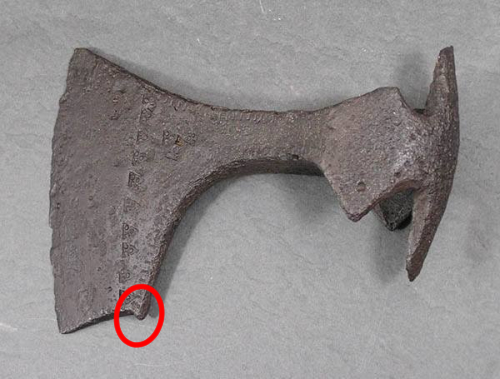
possibly full size axe?
 Attachment: 41.87 KB Attachment: 41.87 KB
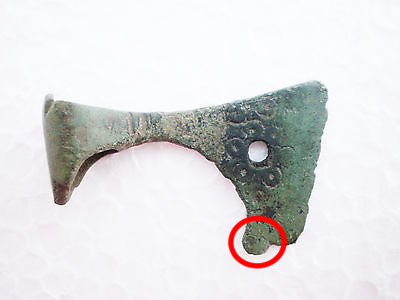
medallion
 Attachment: 62.99 KB Attachment: 62.99 KB
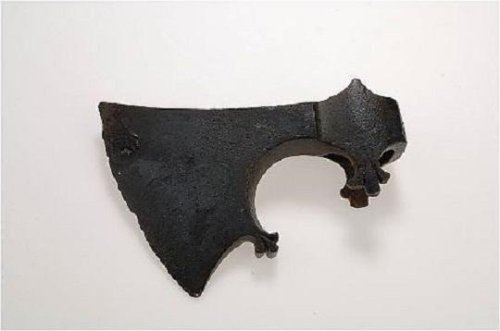
|
|
  |
 |
Luka Borscak

|
 Posted: Fri 25 Sep, 2015 3:52 am Post subject: Posted: Fri 25 Sep, 2015 3:52 am Post subject: |
 |
|
|
I see such axes usually attributed to slavic peoples in early middleages, not migration period... But I'm not sure about more precise dating...
|
|
  |
 |
Daniel Wallace

Location: Pennsylvania USA Joined: 07 Aug 2011
Posts: 580
|
 Posted: Mon 28 Sep, 2015 3:07 pm Post subject: Posted: Mon 28 Sep, 2015 3:07 pm Post subject: |
 |
|
found a few other pics of what looks like full sized axe heads with this little spur. I'm guessing that these are fighting axes due to their size and shape.
 Attachment: 208.59 KB Attachment: 208.59 KB
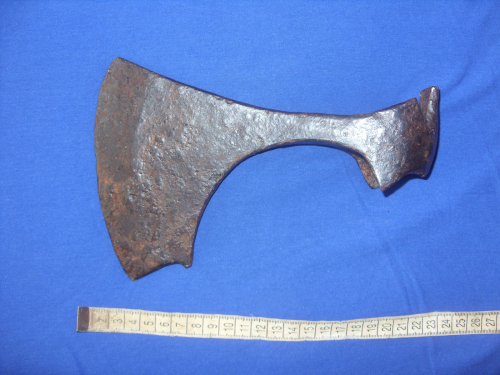
 Attachment: 89.1 KB Attachment: 89.1 KB
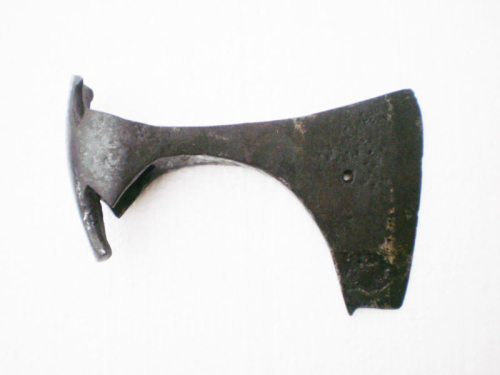
 Attachment: 178.53 KB Attachment: 178.53 KB
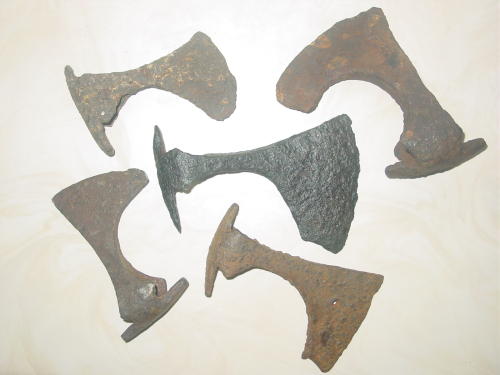
 Attachment: 119.42 KB Attachment: 119.42 KB
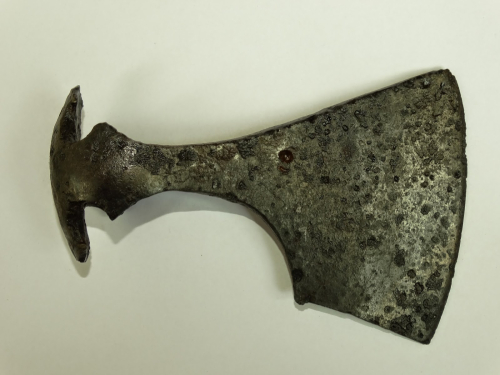
 Attachment: 218.57 KB Attachment: 218.57 KB
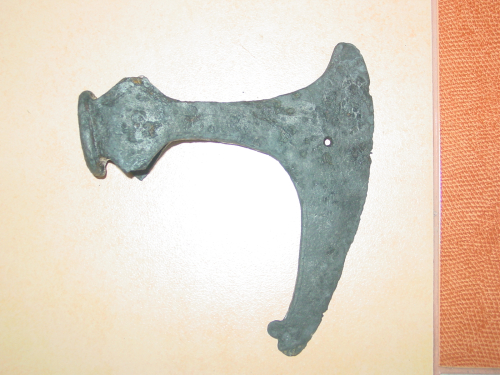
 Attachment: 124.64 KB Attachment: 124.64 KB
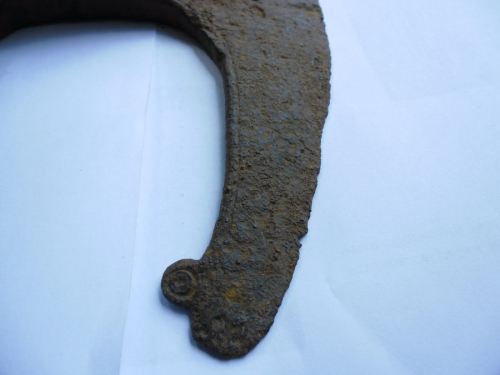
|
|
  |
 |
|
Fabrice Cognot
Industry Professional
|
|
   |
 |
|
Andrew Gill
|
 Posted: Tue 29 Sep, 2015 5:11 am Post subject: Posted: Tue 29 Sep, 2015 5:11 am Post subject: |
 |
|
|
The vestigal pointy ones look as if they might improve the ability of the axe to hook limbs or a shield out of the way, particularly as they are located near a change in angle on the lower horn, which might otherwise allow the hooked object to glance off and slip away while being hooked. Whether that was the intention in including them, I don't know, and the idea of a stop is also plausible (although again looking at the analogy of the winged spear, it may serve more than one purpose). The larger, more elaborate ones look ornamental in purpose. Were these generally earlier or later than the smaller, pointier ones?
|
|
  |
 |
Daniel Wallace

Location: Pennsylvania USA Joined: 07 Aug 2011
Posts: 580
|
 Posted: Tue 29 Sep, 2015 1:23 pm Post subject: Posted: Tue 29 Sep, 2015 1:23 pm Post subject: |
 |
|
| Andrew Gill wrote: | | The vestigal pointy ones look as if they might improve the ability of the axe to hook limbs or a shield out of the way, particularly as they are located near a change in angle on the lower horn, which might otherwise allow the hooked object to glance off and slip away while being hooked. Whether that was the intention in including them, I don't know, and the idea of a stop is also plausible (although again looking at the analogy of the winged spear, it may serve more than one purpose). The larger, more elaborate ones look ornamental in purpose. Were these generally earlier or later than the smaller, pointier ones? |
this was actually my first thought on the spur. second was a type of stop, and third theory I thought up was a type of fulcrum. I had remembered the last time I had really buried my axe into a log and had a time trying to wedge it out. on most of these it looks as if the spur is at the edge of the bevel if not before it, which possibly would allow for the spur to be outside of the cut, and once pushed in with the handle might allow it to release from the lumber easier. makes a little sense, but the majority of these look like war axes, so can that translate into shield combat?
I know period art is not always reliable, but what I like from the manuscript is that you see the spur on what looks like a broad axe (an axe meant for hewing) which really doesn't make sense for a hewing axe to have a stop as it is meant to cross plane lumber.
I'm going to include the spur on the design I'm dreaming up, I just think its unique, and I would like to see if any of my ideas on it are plausible.
|
|
  |
 |
|
Richard Hare
Location: Alberta, canada Joined: 15 Mar 2008
Posts: 135
|
 Posted: Tue 06 Oct, 2015 9:13 pm Post subject: Posted: Tue 06 Oct, 2015 9:13 pm Post subject: |
 |
|
These little details may be just decorative, like we used to see on the back of a hand -saw a few inches from the tip of the blade.
To me they seem a bit too small to be an actual stop, but may have "evolved" ? from something larger?
They make a very nice little detail though, very pleasing to the eye so I say go for it Dan!
|
|
   |
 |
|
|

